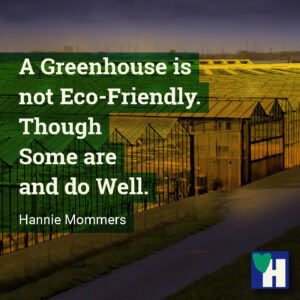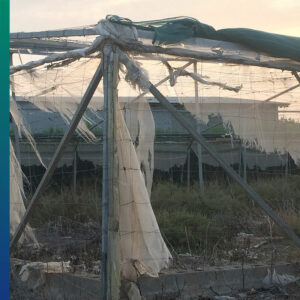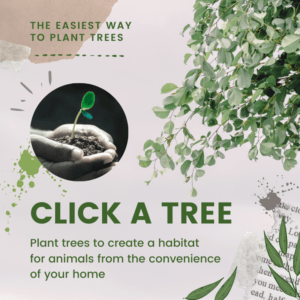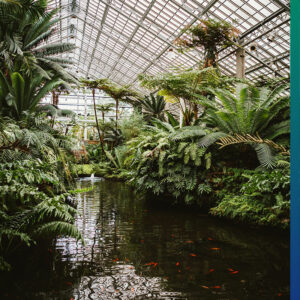
If you fly to Schiphol Airport in the evenings, there is a good chance that you will pass over the horticultural area ‘t Westland. That is not to be missed because the greenhouses light up like a Christmas tree.
Horticultural greenhouses in the Netherlands consume 80% of agricultural energy consumption. So the conclusion can quickly be that a greenhouse is not eco-friendly. Certainly not, as the pesticides used in the monocultures in those greenhouses are often far from environmentally friendly either.
However, there are also greenhouses that are eco-friendly. What should we pay attention to if we want a greenhouse for our vegetables?
Some of the links are affiliate links. As an affiliate associate, we earn a commission when you purchase any of the products offered through the shared links at no extra cost for you. This helps us maintain this website.
Table of contents
Reducing energy consumption

For years, many people have trusted greenhouses as a great way to grow quality healthy fruits and vegetables on your own all year round. And recently, growing our own natural and organic garden has become more and more popular.
So it comes as no surprise that many people are now building eco-friendly greenhouses to help grow safe, high-quality fruits and vegetables right at home.
You might not think about it, yet, growing our own vegetables is a great way to reduce our energy consumption. Our food doesn’t magically appear at the grocery store, it has to be shipped there, usually by truck, and sometimes from very far away.
That can consume a lot of energy, which we save by growing our own food at home. And having a greenhouse lets us grow vegetables all year round. So why waste all the good we’re doing by using tons of energy in our greenhouse?
Types of greenhouses

- Mini greenhouse. At the time we were not yet worried about the plastic problem, I bought small containers with a raised lid. You can easily make such a small greenhouse yourself with a large flower pot and a glass plate that you place on it;
- Garden frame. The easiest one is a tunnel arch with a plastic cover. To avoid the use of plastic, a bottomless container with a glass cover placed over the plants in the garden is better;
- Wall greenhouse. The advantage of a wall greenhouse is that the heat is absorbed by the wall so less energy to warm up is needed. The disadvantage is that there are fewer sun-hours than in a free-standing greenhouse;
- Greenhouse. A small one for personal use in the garden;
- Industrial green-warehouse. Several rows of greenhouses next to each other.
Greenhouse temperatures

- Unheated greenhouse;
- Cold greenhouse;
- Temperate greenhouse;
- Tropical greenhouse.
Most greenhouses for personal use are cold greenhouses, meaning there is no additional heating. A hobbyist growing orchids will want a heated greenhouse.
The commercial greenhouses in Northern Europe all have climate control and lighting. In the Netherlands, there is a lot of research into sustainable ways. The greenhouses are made of glass and the lighting is LED.
In Spain, the greenhouses are made of plastic. And because plastic is considered a disposable material, it is not used economically.
Almeria is notorious for the number of plastic greenhouses. Besides the Great Wall of China, this is the only man-made object that can be seen from space!
Energy efficiency on a small scale

If we live in a cold(er) climate, we can’t just use less heat in our greenhouse during the winter, because that could have disastrous effects on the plants. Yet, we can invest in lower energy light bulbs and increased insulation in the winter.
Double glass is a way to save energy and money. Putting kraft paper or a blanket on top of the greenhouse at night might help. This way the heat is let in during the day and sealed inside at night.
In some greenhouses, saving energy is as easy as opening the vents during the hot part of the day, and closing them during night-time cooling.
Sustainable pest control
Another great way to make any garden and greenhouse more eco-friendly is to reduce the use of chemical fertilizers and pesticides. While a greenhouse can protect our plants, we still may have pest or disease issues.
Especially in a greenhouse, where they can’t escape, the use of ladybugs against lice and bumblebees for fertilization is fabulous.
Related: 8 Natural Pesticides for Plants that are Useful in our Garden
Sustainable use of water
Did you know that certain areas of the United States will run out of fresh usable water before there’s even a global effect of global climate change? That’s because certain areas are using water at an alarming rate, which is why it’s a great idea to cut back on water use in our eco-greenhouse.
Because they don’t get rainwater, greenhouse plants need to be watered, but what water we use makes a difference. The easiest solution is simply to collect the rainwater and use that to water the plants.
A simple gutter system can be installed that runs exactly where you need it. You can also manually apply collected rainwater to the plants, or use a pump system. Just remember that pumps are not only expensive, but they’re also going to use energy as well.
Another great water solution is to reuse greywater from another area of your house. Wastewater from baths, boiling food, or even water that runs when you’re waiting for the sink water to warm up, can be collected and used for watering plants. Just remember to pay attention to what chemicals might be in your wastewater.
Related: Collect Rainwater Safely and Effectively and Save on your Water Bill
Sustainable construction of the greenhouse
It is also advisable to pay attention to the materials of the greenhouse. Although aluminum is light, which makes it a pleasant material to work with, it is also environmentally unfriendly. The same goes for plastic.
Aluminum can be replaced by another metal or wood. Glass can be used instead of plastic.
The composition of paint is often forgotten in making our home and environment greener. Most paints are plastic-based, not to mention the chemical liquids used to clean the brushes.
A greenhouse is not eco-friendly?
By making small adjustments to our greenhouses we can actually make it a lot greener! And with some extra attention, our greenhouses will definitely be more eco-friendly than the commercial ones.
In summary
- Reduce energy usage;
- Use or reuse sustainable materials;
- Flooring is not necessary;
- Recycle materials and garden waste;
- Collect rainwater;
- Install solar power;
- Have double glazing.
Related: How to Start Organic Composting at Home Immediately
Do you have a greenhouse or a hotbed? Tell us in the comment box below.



I love this article, Hannie! It is so much my heart as well! We were thinking of building a greenhouse on our rooftop because it is safer for snails. In the Netherlands, we have so many snails due to the much rain, so we grew our produce in pots. But even there, they are coming from everywhere.
This summer, we have so much rain that our garden is covered with snails, and they eat our vegetables. I tried so many tips against them, also beer, but it didn’t work efficiently. So, our rooftop might be a good alternative, but they can climb very well.
We try to save on water very much; even we have so much water here. Other countries are not that fortunate. But we are not fortunate with sunlight! 😉 I use some plastics I have stored for my seeds, and it works well. So, in that way, I recycle the plastic. I am very pleased with your articles; I learn so much, or receive much confirmation! Great, Hannie! Thank you very much! 🙂
I am so glad you like the article, Sylvia, thanks.
Amazing how much nuisance you have from snails. We did have a few snails in the Netherlands at the time, but never in the quantities you describe. Over here we again have some snails. Different from the Dutch ones. They are little and white, the Dutch ones were big and gray.
I hope your plan for the greenhouse on the roof works out well. At the moment, we only have small breeding boxes, and I am still unsure whether we could use a greenhouse. Things grow so quickly over here by just putting some seeds in the ground. We’ll see.
Thanks again and take care.
My parents have a very well-organized and beautiful greenhouse, with both flowers and veggies. They use zero fertilizers or pesticides, instead they rely on companion planting, for example cucumbers and radishes. I never thought about using a water collecting system, this could be easily implemented there.
Hi Trinity, that’s so great your parents have a greenhouse. And I am quite sure they will put the cucumber and radish wide apart because they are bad neighbors to each other. 🙂
Yes, a water collecting system for a greenhouse is not too hard to implement and plants love rainwater as it is usually softer than tap water. Let me know how that worked out for your parents, please?
Thanks for your reply and take care.